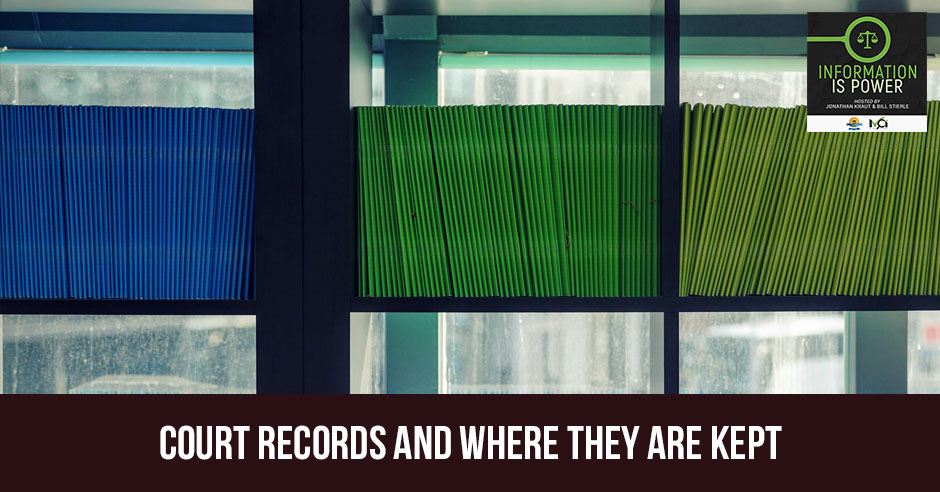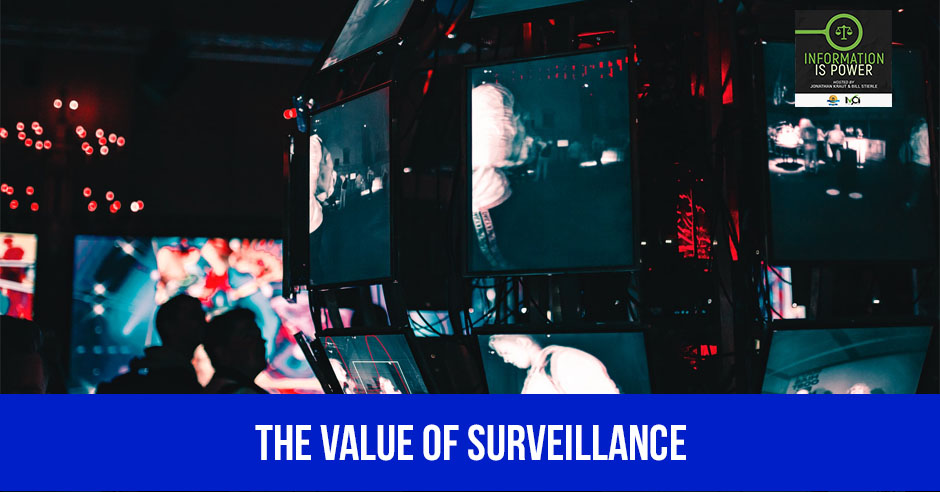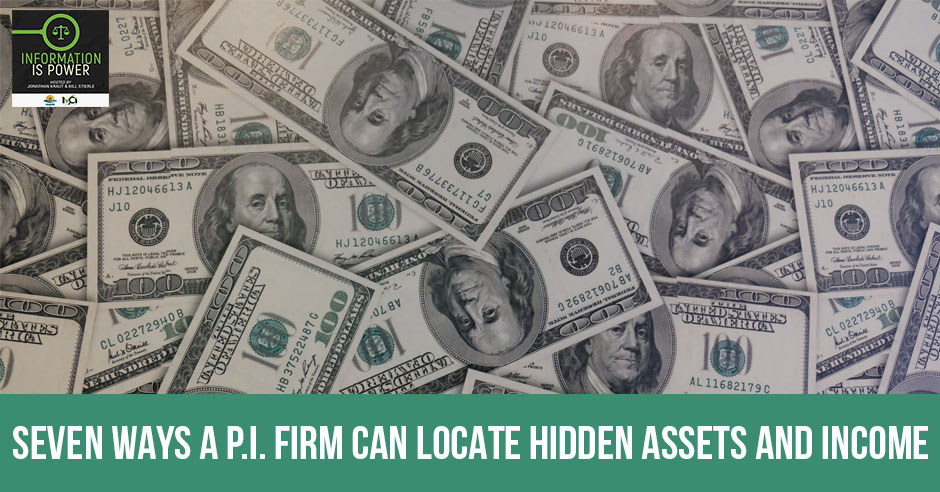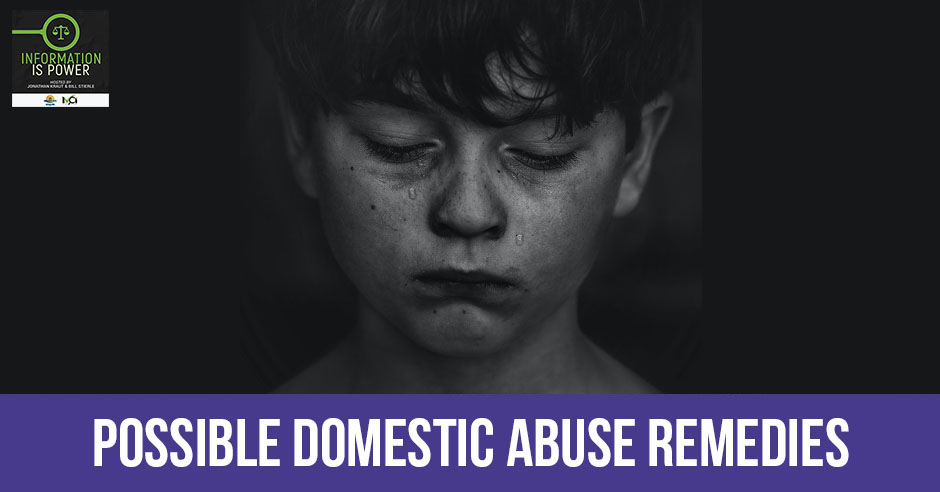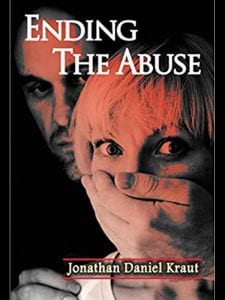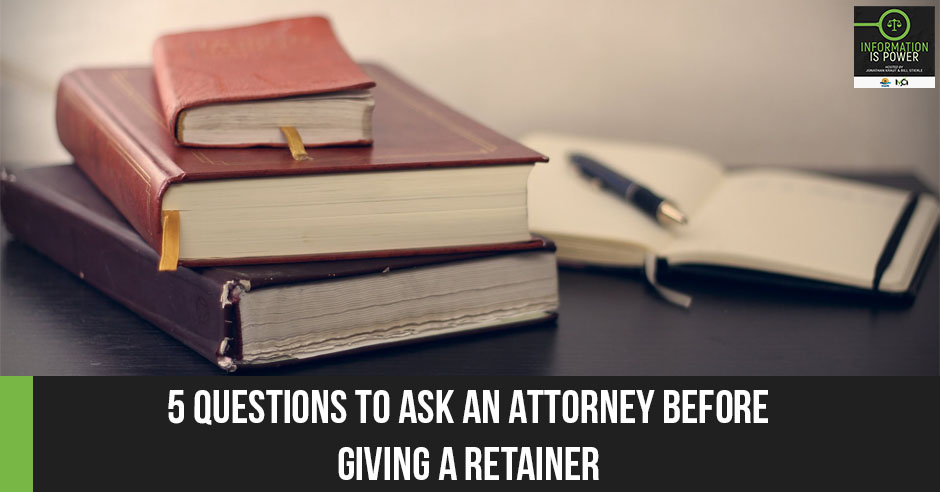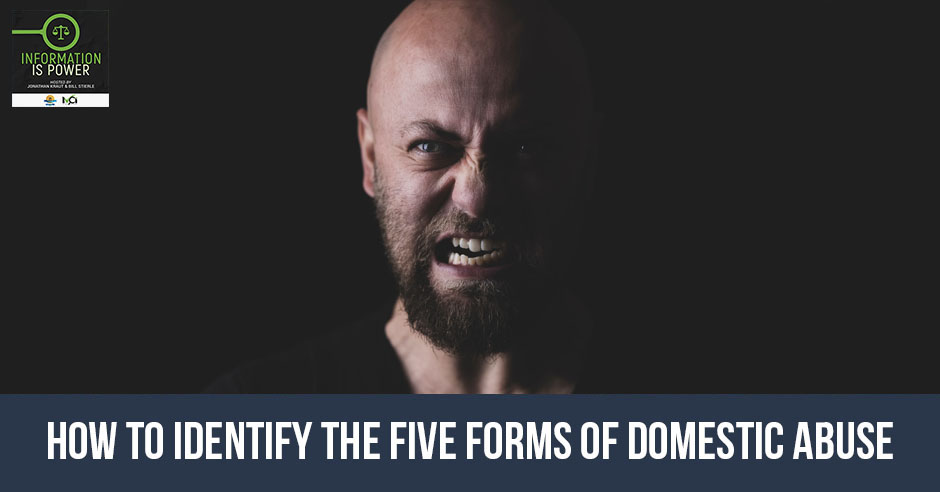
Are you a domestic abuse victim or an abuser? In this episode, Jonathan Kraut and Bill Stierle take us to a deeper understanding of domestic abuse as they discuss the five distinctive abuser traits. They discuss the kind of mentality abusers have and what they do to project that to their victims. On the other hand, Jonathan and Bill also give light to the different typical victim categories and how they behave in an abusive relationship. Learn more about domestic abuse and gain clarity about how to report these situations and help someone out from this cycle of mental, emotional, and physical violence.
—
Listen to the podcast here:
How To Identify The Five Forms Of Domestic Abuse
Better Understanding Of Domestic Violence And Abuse And The Five Typical Types Of Abuser Conduct
The thing I like about this title is, Jonathan, you know a lot about this. A big part of understanding and identifying domestic abuse is a big part of your history. Tell us a little bit about your history and your experiences in dealing with domestic abuse.
For a period, I was a dean of a college department at a degree-granting institution and became the counselor for the student body. We may have only had 500 or 600 in our student population. I had office hours at a certain time and anyone with an issue could come to see me. Usually Friday between noon and 3:00, I’d have 30-minute appointments and it’s mostly women. Most of the women had the same story. “The guy is trying to control me. He started so nice. He was wonderful. I couldn’t believe what a great guy he was. He began treating me poorly. He began abusing me and hurting me and taking away my phone, not letting me call my parents, telling me what I can do and can’t do. I’m trying so hard to make him happy. What can I do?”
I had so many of these similar stories that I decided to ask the college for support in running some studies. What we found out was after interviewing maybe 500 or 1,000 people that there were five distinctive abuser traits. That’s what we’re going to discuss. We focus on the different characteristics of an abuser. I’ve written books on it and our friends are invited to get a copy. There is a free survey on our website. Are you a victim or you may be an abuser? We then could fill out on behalf of another. It’s anonymous and instant, meaning they answer the questions. They click and they get the answer within ten seconds. This is significant. I think people should pay attention to it.
That’s a great resource that people can have access to. Even counselors could use those and others can use it to assess this because you’ve done some research and you’ve provided some validation from it. You wrote a book about it. This is a big piece. Let’s walk through this a little bit. As a California private investigation person, you are focused in on this to provide people protection and support or maybe even resources to how people go to court over this stuff.
Given that I have a lot of experience, as does my staff, we specialize in not only background checks and supporting criminal and family law work, but we do a lot of domestic abuse work as well.
Defining domestic abuse is important and one of the elements is a family member, partner, and a potential partner. Here are some of these different elements. Jonathan, if you’d be willing to talk about these different values or attributes that would fall in the category of abuse, that might help us.
One thing that we want to point out is that domestic violence is outdated terminology. It’s no longer used when we define this conduct. The conduct is between people that know each other well, like a family member, a partner or a potential partner. Those are called domestic relationships. It does not apply to a neighbor down the street or your best friend. It’s someone that there is an inferred relationship, either family or some other intimate relationship. We call it domestic abuse and rightfully so. The courts have understood and in our societies now understanding that abuse can also be emotional and controlling and other kinds of behavior that don’t necessarily require violence. It’s an expanded understanding of the dynamics between those individuals.
They’ve got to have a relationship that’s in place. One of your bullets says it may constitute criminal conduct.
Abuse can be anything that’s negative, destructive or immature where the abuser’s view or perspective is more important and may suffocate or may strangle the victim’s view or their needs. What’s also funny is that the definition does not define you. She was abusive and prompted her partner to abuse her. She wanted to be harmed and mistreated.

Forms Of Domestic Abuse: Abuse can be anything that’s negative or destructive or immature, where the abuser’s view or perspective is more important and may suffocate the victim’s view or their needs.
There’s a relationship between those two things. I know why, but that’s a whole other story that you and I are going to get into as a part of the interchange between the abuser and the victim and the exchange of how those two people play two different roles as my contribution to this. Your research around this is outstanding. It also covers how one person that wants to validate that their self-worth is low. There’s nothing better than getting somebody to abuse them to feel like this fits my image. My self-worth is low. This is something my dad or my mom used to do it to me. I feel crappy and I might as well be in a relationship that reminds me of being in this crappy relationship.
That’s the only thing that I’m familiar with. I’ve had a client say, “I realized my girlfriend was like my mom and she was as abusive as my mom was.” I was like, “How did you like that?” He goes, “I didn’t like that.” I go, “Was it the familiarity, though?” He said, “Yes.” “Could it be you’re going for familiarity?” “I want to be with a kind person.” I go, “Part of you doesn’t, but part of you doesn’t know how to be with a kind person, doesn’t know how to be with a loving person, and doesn’t know how to get somebody to love and care for you.” It leads to criminal conduct because it starts escalating.
What’s tragic is if you’re on the street corner and you yelled and screamed and struck a stranger, tried to strangle them, throw dishes at them, you’d be in prison for five years. If you did that to your spouse, you get 52 weeks of anger management and they say, “It’s between you. We’re not involved.” What is typically a felony in some cases is not treated seriously, unfortunately. I think it should be treated with more punishment and more vigorous activity to cure that issue than a stranger.
Meeting the need for protection between the victim and the person that we’re putting in the abusing category is important to get the safety to be restored. Any protective strategy would be a part of that. In defining it, it’s got to be ongoing. It can’t be a one time. Do I have that correct?
Abuse usually is not one incident over 30 years. It’s a pattern of conduct that continues now then may go out of style for a year and come back or there might be more tension for whatever reason, but it typically is not isolated. People with abusive personality types or needs for that contact will leave someone who won’t play along and go find someone else. That’s unfortunate, but that behavior may travel with that person from partner to partner.
It seems like it’s also common in North America. I was looking at some of those numbers that you’ve got. Every nine seconds?
Every nine seconds, a person, typically a woman but not only, is abused in the United States physically or emotionally in some significant way, which means it’s always going on. One in three teens, 1 in 3 women experience abuse at some point in their lives. Over half of all the 911 calls to emergency services is domestic-related. It’s common in North America is the bottom line.
Over half of 911 calls. That was something that was shocking to me. The other one is common. The government has created a structure. What is the structure that they created? Is there a system about it?
There are different pieces. There is a law enforcement piece. Where I live, they have a deputy and an investigator assigned to domestic violence whom I know well and they’re very competent. They know what’s going on. There is the court structure where you have restraining orders, temporary orders, permanent orders, and orders of protection. There’s a whole set of courtrooms and judges for that. There are the domestic violence centers, treatment programs, rehab for abusers, anger management system. The government has put a lot of money into this. It’s worthy of more, believe it or not. We’re just scratching the surface.
It doesn’t have anything to do with income, race, sexual preference, gender? That makes a lot of sense. It’s a little bit everywhere, isn’t it?
It’s not linked to income, race, sexual preference, gender. It is something that’s transmitted from person to person. It’s like a contagion, a disease. That’s the factor that’s most important. It isn’t your ethnic heritage or your faith or anything like that.
Let’s take a look at a typical abuser, their characteristics.
The number one trait is that an abuser will blame the victim for everything. “You make me feel bad. It’s your fault. If you didn’t do this, I wouldn’t feel this way.” There’s a reluctance to take responsibility for something and that’s the hook. That’s where a sincere person says, “I want them to be happy. How can I make them happy?” While the abuser is going to blame the victim for everything no matter what. That’s the first issue.
Second one, does it seem like it makes a judgment, sets rules, those kinds of structures? Can you see how the judgments of the rules would take place in this?
The abuser likes to set the scope of ethics, “This is what’s permitted. This is not permitted. This is right. This is wrong. You do this. You go here,” and the victim doesn’t get a say in it. Typically, the victim has to follow those rules and the abuser will ignore the needs of others. Unless it’s a way to manipulate the behavior of someone, then they’ll use that. Otherwise, they don’t care about the other person. There’s sometimes a big lack of empathy and understanding or other people. They’ll focus on their needs and they have no empathy. It’s about them and what they want and how they feel. The other person’s job is to accommodate that.
I can see how they’re focusing on meeting their own needs and having no empathy. Tell me this thing about immature, sociopath, narcissistic. What are some of the thoughts that you have about those? I know it’s on this typical characteristic.
Abusers tend to be immature, meaning they’re thinking about themselves and they’re often sociopathic and narcissistic. A sociopath wants the rules for others are followed, but for themselves, they do not apply. If I’m an abuser, what’s right for you, you have to do it because the law says you have to do it. I don’t have to. You do. I’ll come after you and nitpick if you don’t do everything exactly the way the law says, but I’m above that. I’m beyond the law. Narcissism is a love of themselves and a reaffirmation of their place or their ego or their beauty possibly or their contribution to the world.
There’s an expansion that goes with this when the label immature shows up. Usually what I focus on is that there is a person that is reverting to an age when they were 12 or 7 or 4 or 15 and they’re acting out of that same belief structure or they’re trying to get those needs met that they weren’t met. An adult tantrum is there’s a six-year-old in the body of a 50-something-year-old person and the label is immature, but they’re trying to get their need for being heard and their need for choice met the same way a six-year-old would do it. This is not a good strategy, but it’s going to show up in the category called abuse because they can’t see that it’s at the expense of the other person.
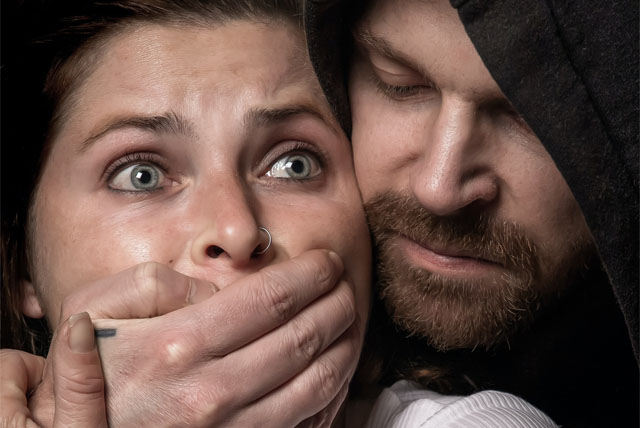
Forms Of Domestic Abuse: The controlling type wants to keep their partner as property who cannot leave, who is afraid to or unable to or doesn’t have the resources to move on.
Typically, those with the abuser characteristics are referring or recalling an earlier time. They’re going back to that time. That’s common where their parents ignored them or some need were not met, whatever need it was. They’re going back to that time. That’s exactly right.
The sociopath, and the way you were describing it was pretty good. The rules apply to you, but they don’t apply to me. That has to do with the person saying my identity and my self-worth can’t follow the rules. I’m too big for this. To you, you’re the little person over there. My self-worth is bigger. Yours is not. You’ve got to follow this and you have to work around me. You have to do these different strategies and things like that. Narcissistic is a little bit more unsettling because that’s a person that meets their need for recognition, acknowledgment, respect and self-worth as their identity. It’s like, “Can’t you see how great I am? Look at all the great things I’ve done. Nobody’s been able to do anything the way I’ve been able to do it.”
That grandiose respect, recognition part, what happens is that it’s tough. We’ve got to change our language and communication in the face of these folks that sit in the category called abusers in order to get past it. The main thing for you to get ahold of is to go and take the survey, find out how to get support around this. How can you deal with these people differently? Get the people around you that can make a difference for you. With these different typical victim categories, now that you’ve got the abuse categories, could you read through some of these?
As we said, the roles are not finite. This is a generality. They feel responsible for his or her partner and how they feel. There is an attempt to try to make them feel better, to accommodate for them, to make excuses for them, to do everything in their power to make them happy. The abuser is not going to be happy. Their job is not to be happy to complain. Be upset, that’s their job. Everybody’s happy in this relationship because one will do anything to make them happy and the other one will never be happy. They’re wrapped in this web of feeding each other’s needs. Not necessarily consciously, by the way.
I’d say the victims that I’ve worked with over the years have wonderful and noble characteristics. A lot of them are in the healthcare field. They’re teachers, nurturers, healers. They work in a daycare and work with the elderly. Their job is to support those. Sometimes that bleeds over to the relationship where if there’s an abusive personality, they take advantage of that goodness. The other thing is that some of these victims have unending forgiveness and unending patience. They believe that it’ll get better. One day they’ll change and they won’t leave because they’re trying hard to make it work. Whatever reason, guilt or connection.
The connection need is very high. The care for the other person’s need is high, but also the validation need that, “This is my role. This is my gift and I got to help them out.”
“My job is to take care of him. I’m the husband. Whatever she needs, I’ll do it.” I hear that all the time.
There’s also trying to compensate for what the partner’s misconduct would be, which would be propping up bad behavior. Having an awareness that accountability has to exist on their side. If I keep giving them a pass on accountability and saying, “They’re a nice guy,” it’s like, “No, that’s not helpful.”
Another example is, “She had one glass of wine and it set her off. If she didn’t drink that glass, she’d be polite.”
The Cycle Of Violence Type
Let’s go through some of these. Abuser trait number one. I think we’ve got this cycle of violence type that you’ve outlined here. Give us a quick read-through of all the bullets and then let’s go back over them one by one.
The cycle of violence type is one of the most common forms of abuser traits. The purpose of this cycle of violence type is to get forgiveness and redemption at the end. I don’t know of too many cases that happened at 8:00 in the morning, but there are some. This person will say, “It’ll never happen again. I’m sorry. Please forgive me.” Remember, they want forgiveness. “Please forgive. It’ll never happen again. Here are the excuses why I had this explosion. My mother-in-law told me something terrible. I lost my job. I was drinking. I had a lot of trouble at work. There’s a lot of traffic coming over here,” whatever reason they can give as to why they exploded. “It will never happen again. I promise you that’s it. I learned my lesson.” Typically, the destruction is property destruction, yelling and screaming, lots of noise, slamming doors, threatening suicide, “I’ll hurt myself if you don’t come back to me.” They break things.
These can be dangerous, but they’re not as dangerous as some other traits. The cycle of violence type tends to build up tension and the frequency of events becomes more rapid. Maybe the first three months there’s one event and then the next three months there are two events. The next three months, three events, and these go on for years. Finally, there are 1 or 2 events now because there has to be a constant need for forgiveness. The concept is, “The more bad things I do, the more I’ll be forgiven. They have to be more and more horrendous. I have to step it up each time. I can’t go back and repeat the same thing. I’ve got to do more.” There’s a pattern where unfortunately both parties are emotionally connected to this behavior and they’re almost anticipating. Is it going to be now or in 0.5 hours?
The setup is sitting right there. The cycle of things and the psychological world, they’ll call this the shame cycle. There’s a good troll, a rebellion, a release and there is an apology or a submit. Control, rebellion, submit. It’s interesting but the main thing is that it is a dynamic that both people are playing the abuser and the victim. What I’d like our readers to take away from this is that there is a way out. There is a way to go like, “I could stare into this with my adult mind and I can speak to and meet my own need for protection, meet my own need for progress to take place.” The takeaway is there is a shame cycle. Two parties are participating in this, both the victim and the abuser.
To get a clear focus on how we respond to this because the adult response to this is both two things, “I got to provide protection for each person and I’ve got to get it emotionally safe so that they can get closure on the relationship if it’s not working because of the dynamic that they’re in and/or get in the process of getting into the healing of the relationship,” which also some people do too. Getting some guidance, coaching, counseling and healing work to take place. The takeaway is if you’re reading this and you know somebody, forward this to them so they can start the process of getting the support they need through Jonathan or other wonderful care practitioners that are out there to the cycle of violence and get in front of this. Let’s take a look at the second abuser. What are some other things that you’ve categorized and been able to study?
The Sadistic Type
Abuser trait number two, this one’s scary. The first one was bad, but this one’s even worse. We call it the sadistic type. This trait is causing fear in others. The more afraid they are for their lives, the more paralyzed they are to act, the better. The purpose is to create fear. One way is to use physical torture, even killing animals or killing people to create fear. The more innocent the animal, the more innocent the child, the more effective creating fear is. They demonstrate power by breaking things, smashing doors or crashing the car. “I could break you just like this ironing board.” This is common and I’m not sure why.
You might know. They may be burning their victim’s feet or between their toes with cigarettes, but they don’t smoke, just as a tool to create pain. They often want to strike the face, deform the face, make scars, give someone a black eye and let them lie about how they got it. They punch pregnant women, kick them in the stomach, going right after what the woman most fears is harm to the child. These folks are a little bit more serious and this could be deadly. The real trade here is that the escalation of torture and pain has to increase to keep fear going. It doesn’t level out. It gets worse. This is dangerous.
Getting physical safety and emotional safety from the experience of being in a relationship with somebody that has these traits is important. That’s a big reason why you do the work you do. You’ve written the book and studied this out to see if we can get some protection. The inside part of this story, you’re talking a lot about the fear part of it. The weird part about this story is what is happening inside the person. What’s happening inside the person is that this sadistic person is trying to tragically, and at the expense of others, tries to get the other person to feel helpless, hopeless, isolated from others that they can’t get support.
It’s a tragic form of empathy. “I’m going to get you this other person to feel helpless and hopeless so I don’t have to experience helpless and hopeless inside me the way I did when I was a child, the way I did with the boss I had, the way I did with the priest that did what he did, the way I did with my mother-in-law, the way what she’d said or did, or my stepmother, the way she said or did.” The transfer of pain is a big part of the sadistic experience because if they felt helpless, who wants to feel helpless? I might as well get somebody else to feel helpless.

Forms Of Domestic Abuse: Where some domestic violence centers and other treatment programs fall a little short on is looking at the victim’s needs but not the cause of it.
The tragic part is the transference of pain. The abuser, the sadistic-type is saying that what’s happening in their body is, “I feel pain, helpless and hopeless, but I don’t want to feel those things. I’d rather make this other person feel helpless and hopeless or this other animal or somebody else feels helpless and hopeless so I don’t have to. I’d rather see helpless and hopelessness on your face than me experiencing helpless, hopeless and take accountability for it.”
It’s about transferring accountability and getting empathy by making someone else suffer. The reason why hits and deforms the face is, “I see you feeling helpless and hopeless in my direction. I don’t want to see that, so I’m going to try to wipe that emotion off of your face.” That is a tragic way that somebody is doing this to function. They don’t know that you know why or what they’re doing it. They’re not connected to the trauma point in their consciousness or the languages that they’re saying to themselves.
A good point is a lot of abusers are not aware that this is abuse. I’ve spoken with many, “Am I doing that? Is that how she sees it, how he perceives me?” It’s like they’re very surprised there’s not a connection to their behavior and no accountability. Sometimes you tell them and they go, “I was bad.” I had one guy who was bad. He would hurt his wife often. When we talked about it, I could tell you he’s completely changed. He took responsibility. He understood what he did. He understood where it came from and it maybe took a week or two and I’m proud of him. He came out of it and it’s been five years. He’s been good. He moved on and got remarried. He’s fine. Hopefully, he’ll stay that way. He had to deal with his issue from the past and it was very tough for him to make that breakthrough, but he did it. It could be done.
The Controlling Type
Let’s take a look at abuser trait three. We’ve got some controlling type energy showing up with this. Let’s take a look at these elements.
The controlling type is different from sadistic. Their intention is to own a person like property. They’re not trying to create fear. They’re trying to create a submission. They’re dominant and their partner is subordinate. They take away items of communication, like a cell phone. “You can’t call your family. You can’t have money. You can’t have credit cards. I’m going to decide who you talk to, what you say. I’m afraid you’re going to leave me, so you’re not going to have any friends. You’re not going to meet anybody, so you can’t leave me. I’m going to drop you off and pick you up from work. I’m going to make all the decisions and I’m going to complain and degrade you to make you feel bad, to lower your self-esteem so that you won’t leave me.” The controlling type wants to keep their partner as property who cannot leave, who is afraid to or unable to or doesn’t have the resources to move on. That’s the whole idea here.
The Stalker-Revenger Type
You can see the helpless, hopeless thing comes back into this place as well as an emphasis on getting the person to submit and lose their choice. A lot of times, the opposite of the word ‘control’ is the word ‘choice’. “I’m going to take choices away because choices were taken away from me.” They’re putting this entire pressure on and usually they have a lot of noes, judgments, should and shouldn’t in their consciousness. “Because I own this, I own you. I’m going to be the controlling parent. I’m going to hover. I’m going to take all these things away.” The main thing is getting support around this. Let’s take a look at the fourth one. What’s this stalker-revenger type? What’s this one about?
Stalking and the revenge type, there are different forms, but the purpose of this abuser trait is to punish others, to find and create a way to get the victim upset, to be rejected. Once the abuser feels that rejection, they feel permission to punish the person to go after them. It’s a complete setup. A lot of stalkers will sit outside someone’s work or follow them from home or meet them by accident in the store and acting out revenge.
They’re not upset with the person. It’s this acting out piece. Is that correct?
Yes. What’s even scarier is some stalkers that I’ve followed and worked with, clients that had many stalkers, one pretty young woman, had eight. They rotate. There was one guy, we followed him for a week and he had three different victims. He was going after one lady on Monday, another lady on Tuesday, another one on Friday, and then go back to the first one on Saturday. He was rotating his victims. He was trying to get any of them angry but be far enough away where there was a mystery and there must be something going on. He didn’t know that. He didn’t know any of them. He was trying to be irritable at a distance and feel like he has power over them. “They can’t stop me from watching them. They don’t know I’m here. They did see me. They might forget me, but I’ll be here tomorrow. They’ll see me again. They’re going to begin to fear for their lives. When they reject me and they tell me not to, I can go after him and punish them.” It would be dangerous as well, but it’s a sad way of getting attention, I would guess.
Attention, I would probably replace that with the connection. I think it’s a tragic way to get a connection with the person. It’s not a real relationship, but it is somewhat of a relationship. It’s not a real partnership, but it is somewhat of a partnership. It also plays against emotional safety. They don’t have the courage to have a real relationship with a real human being and deal with the real rejection of, “I know that we met, but listen, you’re not my type. I’m odd in my own world. I’m doing my own thing here. I have this, I’m over here. It’s not a fit for between you and me.”
There are two parts to this behavior, two traits, but it comes out in two ways. There’s a stalking type and the revenge type, which is essentially the same in a relationship and they’re building up in waiting to take revenge. They’re going to drive their partner away and then punish them for leaving. It’s got the same purpose of punishment. I put them together. Our research shows that these abuses with this trait can switch back and forth from stocking to revenge in a relationship and not in a relationship back and forth. The motivation is the same, but the manifestation is a little bit different.
This embarrassment, it’s almost like they’re trying to get their self-worth or their respect met at the expense of another person because, “You lost it. I didn’t lose it. You’re the one who had gotten angry. All I was doing is doing this small little thing over here.” How could that be?
They have their family or their friends or their coworkers see action by the victim and turn it into an embarrassing moment for them. It makes for some reason happy.
The Codependent Type
It validates that self-worth thing again. Let me take a look at four. It’s different than number five, the codependent type because there is a different dynamic altogether.
The codependent type has two variations, two manifestations. One is an emotional codependent and the other is a chemical codependent. Sometimes they’re both present and sometimes one or the other. The purpose of this abuser trait is to link all their problems to the outside conditions that exist. “If I only had one more beer, if I had only one more pill, if I had only one more relationship, everything would be fine.” It’s never internal. That’s the issue. The external is the issue. Constant emotional contact or they always have to be talking and touching and saying things. Being quiet is a difficult thing for them. They change partners quickly and instantly. You’ve seen probably a homeless couple that pop out of an alley of two people of similar age with a similar demeanor, talking fast or talking slow.
They probably met twenty minutes ago or two years ago, but you can’t tell because they’re instantly in a relationship until they find someone better. They also only want a partner that enables that dependency. They don’t take a partner who won’t play along. If they find a partner who plays along, who provides the drugs or provides the emotional connection and they’re constant emergencies. In some cases, there’s the ambulance and the fire department, the police department and the Department of Child and Family Service. There are all these things going on. “We’re going to lose the house. We’re out of money. We don’t have food.” This happens five times a day. It isn’t like once a year. They need a partner that will enable that narrative and will sustain that narrative.
The controller person also could have the submitting person right next to it and that’s that codependent piece, the cycle of things that you’re talking about here. There’s no stability in the relationship and there’s no stability with emotions. That’s the thing. They’re medicating their emotions with a chemical or they’re medicating their emotions with a relationship. It’s a similar type of medication that I’m getting the same fill. It’s a spiritual connection piece that this person is putting the emphasis on the dependency of emotional management. It’s difficult. When you take a look at these and there’s an overreaction, there’s a drama. That’s a roller coaster ride. It’s like, “You didn’t do it. You didn’t say this. You didn’t do this, you didn’t say this.” It’s very challenging there too. The combinations of 2 or 3 traits are very common. Let’s talk about these common traits a little bit.
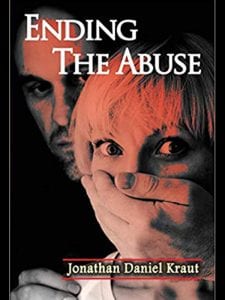
Ending The Abuse
A victim maybe has a personality type or a certain receptiveness that make victimization easier. Generally, an abuser will have 1 or 2 or 3 of these traits. I’ve seen 5 once out of maybe 1,000. We’ve measured hundreds, maybe a thousand of these conditions. They rarely have all five. Mostly 2 or 3. Usually, there is a couple of these together. The traits are important because you have to identify the trait to know the remedy. Where I find some domestic violence centers and other treatment programs a little short is they’re looking at the victim’s needs, but they’re not looking at the cause of the victims’ needs. These traits, they’re abuser-based. They’re not based in the victim. The abuser brought them to the relationship. The victim did not. They may have certain characteristics that make it easier to be victimized, but you can’t blame the victim for what someone else does.
Having an awareness that it might be that one-directional piece is important. They like to run the narrative. It says it may affect religion, money, transportation. What does that mean to you? What’s your thought?
Domestic abuse has a lot of manifestations. It can affect when someone can go to church or chapel or synagogue. They won’t let you go. We had one gentleman who was Catholic and his wife tell the priest that his wife was bad because she wouldn’t sleep with them because he was sleeping with other women. I heard this from the priest. He got the priest to tell the woman, “Be a good wife. Your job is to be a good wife and sleep with him. God will take care of him with how he’s cheating on you, but you need to be a good wife.” This abuser was able to get a priest to buy-in.
It’s unsettling is what it is. Jonathan, when I hear you say that the priest was asking the wife to be a good wife still, let God take care of this other guy with this guy’s affairs and sleep with him no matter what he is saying or doing, this is when the systems and the different people inside the systems are not helping or allowing the abuse to continue instead of being a sobering, scary honesty line and go on. “If the person’s doing something and it’s not working for you, then there’s got to be a different conversation taking place.” Otherwise, it could escalate or it could even start in the place of, “I’m going to put my power over.” Any form of power over that takes away the choice of another human being, has some problems to it and leads us down to this victim abuse through-line, which is tough and rampant in our society.
Having 2 or 3 traits in itself makes it much more complicated and much more dangerous because it could be moving back and forth between character types, between characteristics. Taking hostages, for example, “I get the children, you can’t have them. I have your car. You can’t drive. I have your phone. I have your ID.” Those are hostages. It may prevent someone from working. It may prevent someone from having a connection with their children. There’s a profound effect on other people who even witnessed this behavior because this is spread by the observation that experienced disease. We want to try to do all we can to stop this or to help out.
To provide support and protection, it imprints in the children. There’s good documentation of early childhood imprint. Where the child grows up as anxious, nervous, worried and scared, he grows up as angry, furious, aggravated, and irritated. Why do they have those emotions solidly in their conscious/subconscious minds is because of the imprinting that’s taking place.
Medical research has indicated that when a child hears screaming and yelling and banging in the other room, they pick up on this as early as one, maybe even earlier. That imprints them with a tendency towards violence and towards abusive behavior or abusive and acceptance. They don’t have to see it. They can feel and hear it. Imagine an eight-year-old or a six-year-old how they’re impacted by observing, even if it’s someone across the street observing on an abusive relationship.
This is the book that you wrote, Ending The Abuse. There are other books on the marketplace too. The reason why I like this picture is it’s all about no talking, no choice, no expression. If you’re shutting down and not able to talk about things because they could get violent, that’s when you know that you need to get support from a private investigator, a police officer, the court system, counselors. You got to be able to keep the expression moving so that the abuse can get a light shining on it. There’s nothing like a big spotlight to be shown onto either the word abuse or those abusive experiences, as well as to disinfect shame. As soon as you talk through it, it starts to disappear. What a great contribution here and I bet it was something to write this and put this information together. Tell us a little bit about that experience in writing this book. What were some of the wonderful a-ha’s and things that you went through?
There are lots of a-has. One is that most victims have the same story to tell, almost identical. There are millions of abusers, maybe 10 or 20 million adult abusers. There are millions of stalkers. The FBI and I looked at the research estimate. There are about 3 million people being stalked at any given time in the United States. The way that this shows up is a little bit different country to country. The number one thing that would tell us if there’s an abusive relationship is if the partner is afraid of what their partner will think or do if they say something about it. If you’re unsure and you think they’re going to get mad, if you seek help or ask somebody, likely you’re in an abusive relationship.
To be certain, we do have the two free surveys, the characteristics of a victim, and the characteristics of an abuser. There are links on the website at NetCheckPI.com or at the book website EndingTheAbuse.com. They’re confidential. They’re instant. There are 25 questions, English and Spanish. That will tell you a lot more. The book also talks about remedies. The remedies are geared towards a person deciding it’s enough and moving on. If someone has not decided to move on, telling them to move on will not help. I think a person has to come to that conclusion themselves rather than moving on.
There’s the fear. Sometimes it’s the pile of crap metaphor. Have you ever heard of the pilot crap metaphor, Jonathan? They’re in a pile of crap is what they’re in and they’re complaining about the crap. Their crap is up to their neck. It smells. This crap smells. I got it. You won’t believe the crap that I’m in. What this person is doing to me is crap. You say, “Come out now. Come out. Come on out of here.” They look back at you and gently feel sad and helpless and go, “At least it’s warm.” It’s like, “No, that’s not where you want to default. To be in a warm pile of crap and tolerate the smell.” It’s like, “Come on out. Deal with the potential that it might be a little chilly once in a while, but also realize the smell will go away the further you get away from the pile of crap that you’re in.”
The person has to want to get out. They’ve got to decide it’s enough internally. I don’t deserve it. It’s hard to do that when you’re being beaten down every day, when they’re told how badly they are. How badly they clean, they aren’t worth anything. No one will want them. Your family won’t take you back. I’ve heard all those stories. A person’s self-esteem is eroded. It’s hard for them to come out of it. We’re here to help. There are agencies. There’s a domestic violence hotline. It’s a toll-free number. My office is standing by if anyone needs any assistance or guidance. Also, there are a lot of free services available. If someone is abusive, it’s not restricted to victims. Abusers don’t want to be in this way either and there are ways for them to come out too. We’re not blaming anyone here. We’re not labeling them for experiencing something as a child and now they’re acting out. We don’t blame them for what they experienced as a child.
It was a rough go back then. We might as well get some healing and some support for them too. Instead of making one person wrong and one person a saint for being a victim, it’s like, “No, that’s not what we’re doing here. What we’re doing is figuring out how to get support for the dynamics.” Jonathan, this has been interesting. What a great contribution to getting people in a discussion in order to keep shedding light on something that’s painful for our nation, for human beings and their existence, and see if we can provide some support around that. It’s been a lot of fun.
Thank you.
Important Links:



